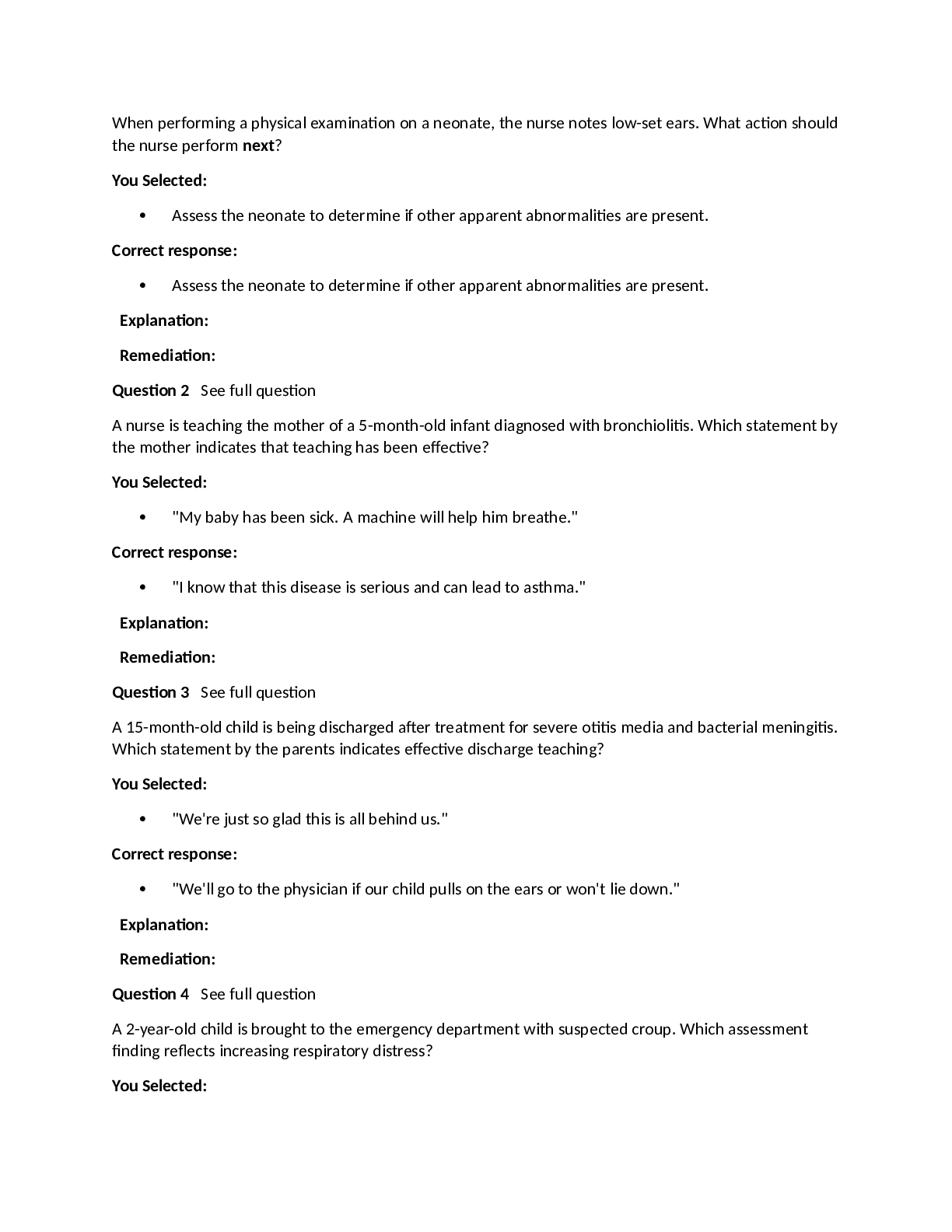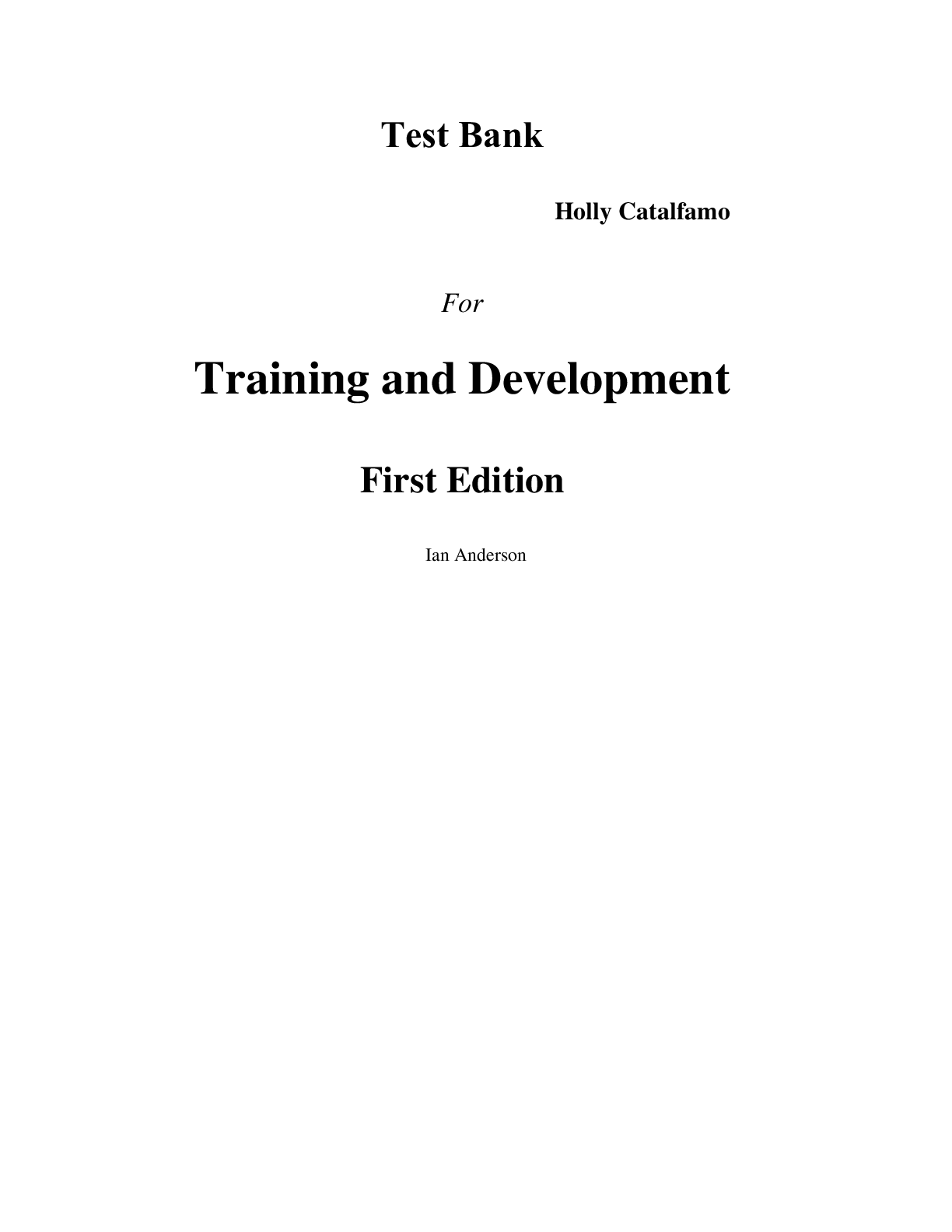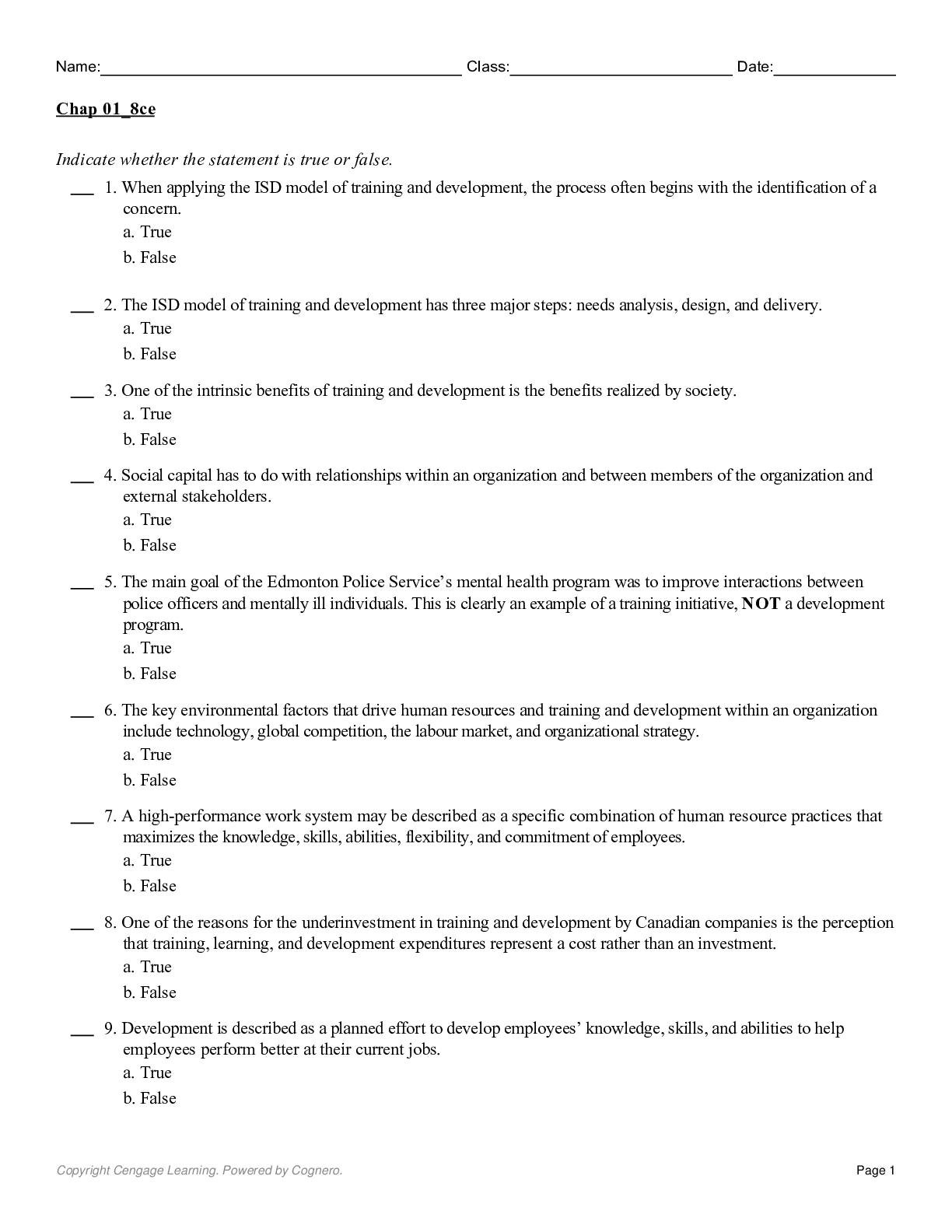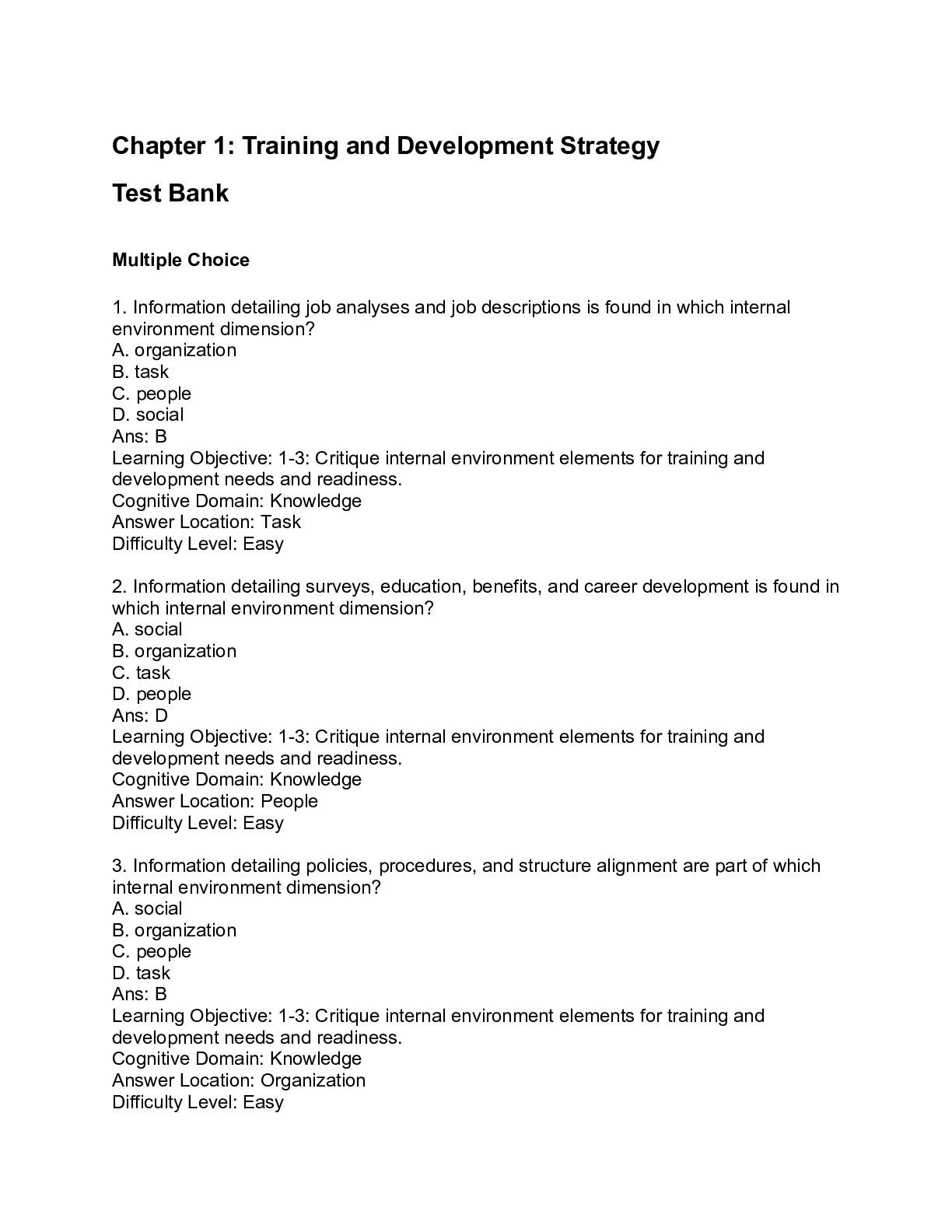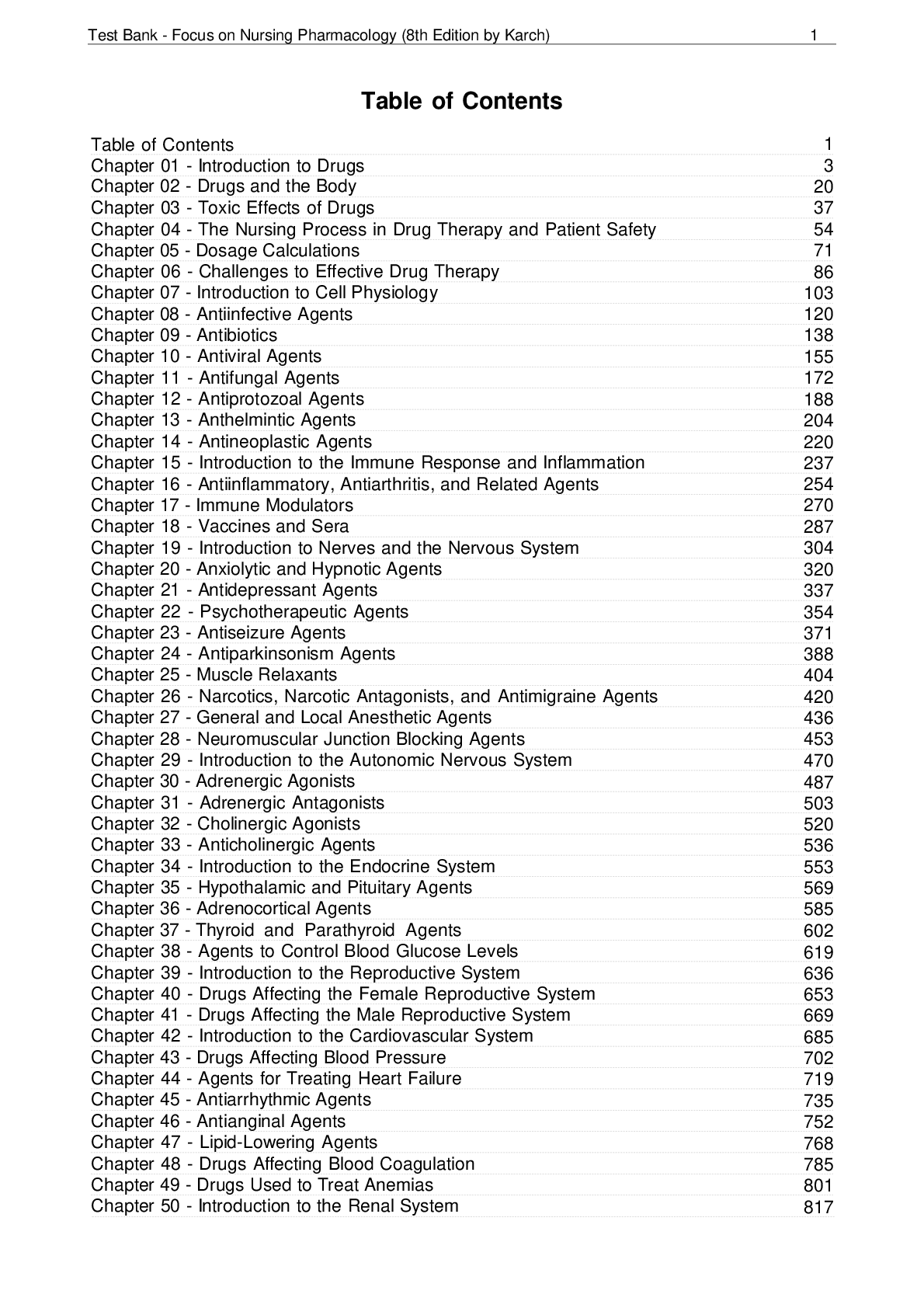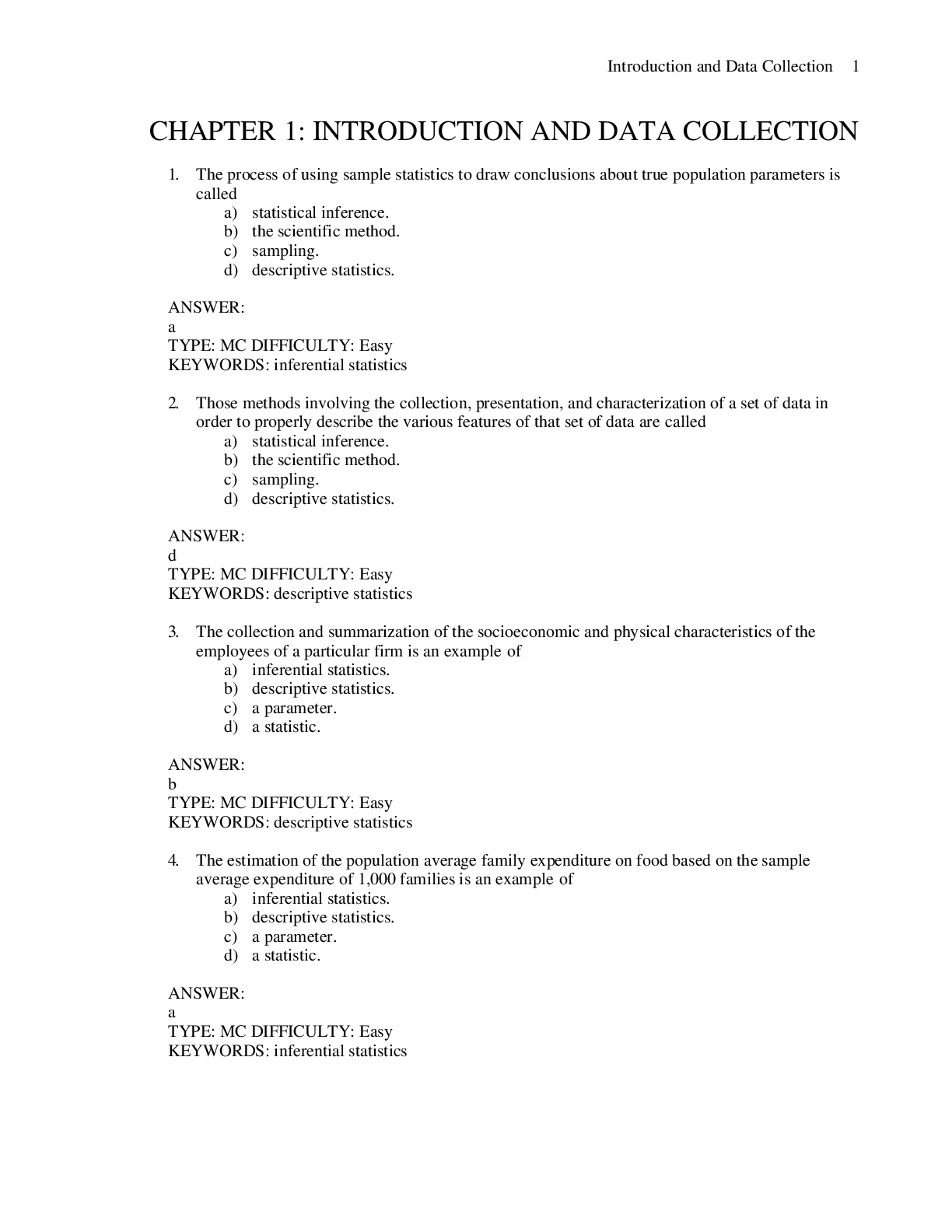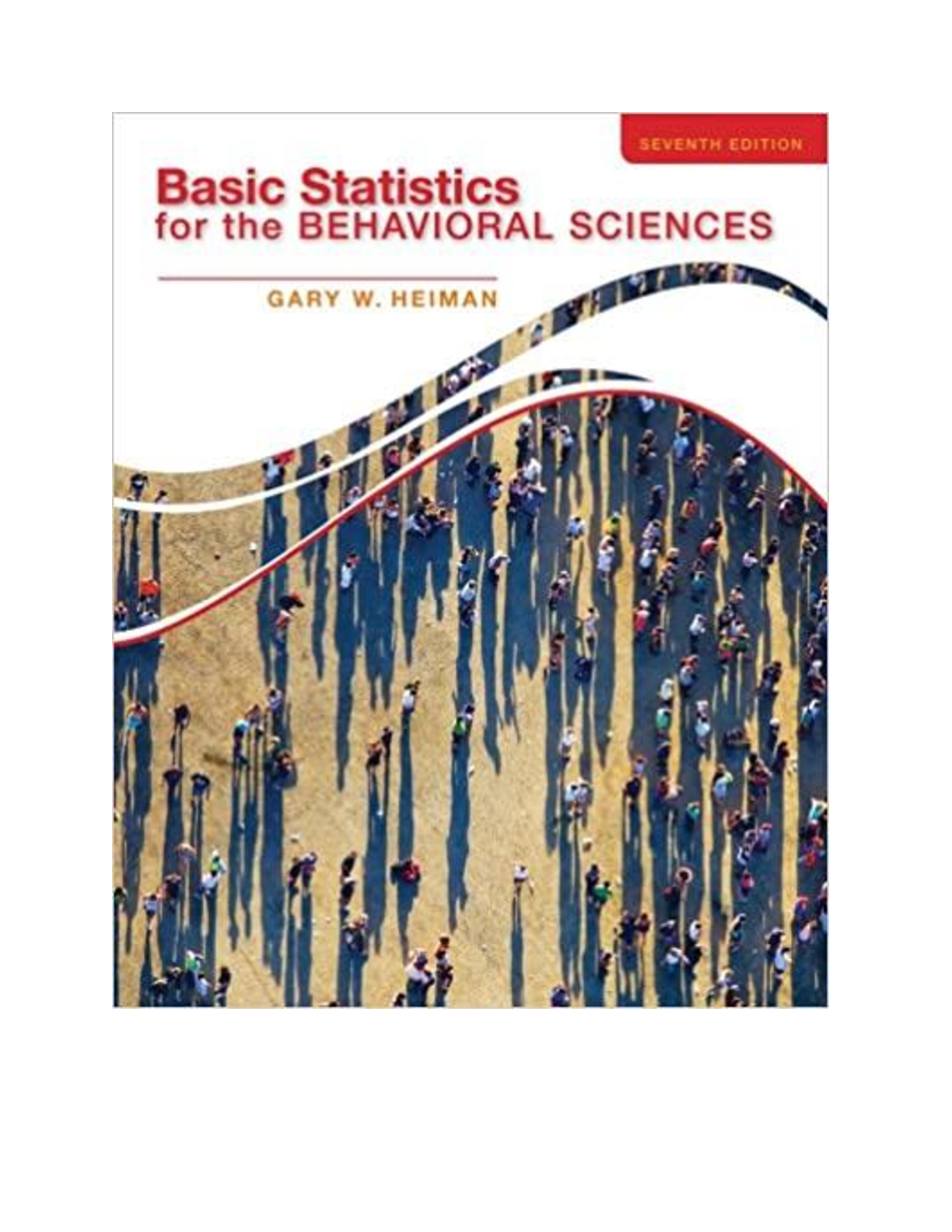Psychology > TEST BANK > Essentials-of-Psychiatric-Mental-Health-Nursing-Concepts-of-Care-in-Evidence-Based-Practice-7th-Edit (All)
Essentials-of-Psychiatric-Mental-Health-Nursing-Concepts-of-Care-in-Evidence-Based-Practice-7th-Edit. 952 Pages_NCLEX. All Correct answers
Document Content and Description Below
Essentials-of-Psychiatric-Mental-Health-Nursing-Concepts-of-Care-in-Evidence-Based-Practice-7th-Edit. Essentials of Psychiatric Mental Health Nursing Everything you need to succeed ... in class, in cl... inical, on exams and on the NCLEX Introduction In recent years, a greater emphasis has been placed on the study of the organic basis for psychiatric illness. This "neuroscientific revolution," with its focus on the biological basis of behavior, has led to several mental illnesses now being considered as physical disorders resulting from malfunctions and / or malformations of the brain. That some behaviors and psychiatric illnesses can be traced to biological causes does not imply that psychosocial and sociocultural influences are totally discounted. For example, there is evidence that psychologi,cal interventions have an influence on brain activity that is similar to psychopharmacologic intervention (Furmark et al., 2002), and evidence exists that lifestyle choices, such as marijuana use, can precipitate mental illness (psychosis) in individuals with genetic vulnerability (NIH, 2015). Ongoing research will build a better understanding of the complex interplay of neural activities within the brain and in interaction with one's environment. The systems of biology, psychology, and sociology are not mutually exclusive-they are interacting systems. This interaction is clearly indicated by the fact that individuals experience biological changes in response to various environmental events. Indeed, one or several of these systems may, at various times, explain behavioral phenomena. This chapter focuses on the role of neurophysiological, neurochemical, genetic, and endocrine influences on psychiatric illness. An introduction to psychopharmacology is included (discussed in more detail in the following chapter), and various diagnostic procedures used to detect alteration in biological function that may contribute to psychiatric illness are identified. The implications for psychiatric mental health nursing are discussed. CORE CONCEPT Psychobiology The study of the biological foundations of cognitive, emotional, and behavioral processes. The Nervous System: An Anatomical Review The Brain The brain has three major divisions subdivided into six major parts: 1. Forebrain a. Cerebrum b. Diencephalon 2. Midbrain a. Mesencephalon 3. Hindbrain a. Pons b. Medulla c. Cerebellum Each of these structures is discussed individually. A summary is presented in Table 2-1. Cerebrum The cerebrum consists of a right and left hemisphere and constitutes the largest part of the human brain. The right and left hemispheres are connected by a deep groove, which houses a band of 200 million neurons (nerve cells) called the corpus callosum.Because each hemisphere controls different functions, information is processed through the corpus callasum so that each hemisphere is aware of the activity of the other. The surface of the cerebrum consists of gray matter and is called the cerebral cortex.The gray matter is so called because the neuron cell bodies of which16 UN IT 1 • Introduction to Psychiatric Mental Health Concepts TAB L E 2- 1 Structure and Function of the Brain STRUCTURE PRIMARY FUNCTION I. THE FOREBRAIN A. Cerebrum l. Frontal lobes 2. Parietal lobes 3. Temporal lobes 4. Occipital lobes B. Diencephalon 1. Thalamus 2. Hypothalamus 3. Limbic system II. THE MIDBRAIN A. Mesencephalon Ill. THE HINDBRAIN A. Pons B. Medulla C. Cerebellum Composed of two hemispheres separated by a deep groove that houses a band of 200 million neurons called the corpus callosum. The outer shell is called the cortex. It is extensively folded and consists of billions of neurons. The left hemisphere appears to deal with logic and solving problems. The right hemisphere may be called the "creative" brain and is associated with affect, behavior, and spatial-perceptual functions. Each hemisphere is divided into four lobes. Voluntary body movement, including movements that permit speaking, thinking and judgment formation, and expression of feelings. Perception and interpretation of most sensory information (including touch, pain, taste, and body position). Hearing, short-term memory, and sense of smell; expression of emotions through connection with limbic system. Visual reception and interpretation. Connects cerebrum with lower brain structures. Integrates all sensory input (except smell) on way to cortex; some involvement with emotions and mood. Regulates anterior and posterior lobes of pituitary gland; exerts control over actions of the autonomic nervous system; regulates appetite and temperature. Consists of medially placed cortical and subcortical structures and the fiber tracts connecting them with one another and with the hypothalamus. It is sometimes called the "emotional brain"-associated with feelings of fear and anxiety; anger and aggression; love, joy, and hope; and with sexuality and social behavior. Responsible for visual, auditory, and balance ("righting") reflexes. Regulation of respiration and skeletal muscle tone; ascending and descending tracts connect brain stem with cerebellum and cortex. Pathway for all ascending and descending fiber tracts; contains vital centers that regulate heart rate, blood pressure, and respiration; reflex centers for swallowing, sneezing, coughing, and vomiting. Regulates muscle tone and coordination and maintains posture and equilibrium. it is composed look gray to the eye. These gray matter cell bodies are thought to be the actual thinking structures of the brain. Another pair of masses of gray matter called basal ganglia is found deep within the cerebral hemispheres. They are responsible for certain subconscious aspects of voluntary movement, such as swinging the arms when walking, gesturing while speaking, and regulating muscle tone (Scanlon & Sanders, 2014). some animals, such as dogs and cats). Each hemisphere of the cerebral cortex is divided into the frontal lobe, parietal lobe, temporal lobe, and occipital lobe. These lobes, which are named for the overlying bones in the cranium, are identified in Figure 2-1. The Frontal Lobes Voluntary body movement is controlled by the impulses through the frontal lobes. The right frontal lobe controls motor activity on the left side of the body, and the left frontal lobe controls motor activity on the right side of the body. The frontal lobe may also play a role in the emotional experience, as evidenced by changes in mood and character after damage to this area. Particularly, the prefrontal cortex The cerebral cortex is identified by numerous folds, called gyri, and deep grooves between the folds, called sulci. This extensive folding extends the surface area of the cerebral cortex and thus permits the presence of millions more neurons than would be possible without it (as is the case in the brains ofCHAPTER 2 • Biological Implications 17 Premotor area General sensory area Frontal lobe Motor speech area A~~~ , association Temporal lobe / Pons Medulla area Parietal lobe Occipital lobe ~ al assoclatloo / area ----- Visual area FIGURE2-1 Left cerebral hemisphere showing some of the functional areas that have been mapped. (From Scanlon, V.C.,& Sanders, T.[2014] . Essentials of anatomy and physiology[7th ed.]. Philadelphia: F.A. Davis Company, with permission.) (the front part of the frontal lobe) plays an essential role in the regulation and adaptation of our emotions to new situations and may have implications in moral and spiritual responses (Sadock, Sadock, & Ruiz, 2015). Neuroimaging tests suggest there maybe some decreased activity in the frontal lobes of people with schizophrenia. The Parietal Lobes The parietal lobes manage somatosensory input, including touch, pain and pressure, taste, temperature, perception of joint and body position, and visceral sensations. The parietal lobes also contain association fibers linked to the primary sensory areas through which interpretation of sensory-perceptual information is made. Language interpretation is associated with the left hemisphere of the parietal lobe. The Temporal Lobes The upper anterior temporal lobe is concerned with auditory functions, and the lower part is dedicated to short-term memory. The sense of smell has a connection to the temporal lobes, as the impulses carried by the olfactory nerves end in this area of the brain. The temporal lobes also play a role in the expression of emotions through an interconnection with the limbic system. The left temporal lobe, along with the left parietal lobe, is involved in language interpretation. The Occipital Lobes The occipital lobes are the primary area of visual reception and interpretation. Visual perception, which gives individuals the ability to judge spatial relationships such as distance and to see in three dimensions, is also processed in this area. Language interpretation is influenced by the occipital lobes through an association with the visual experience. Diencephalon The second part of the fore brain is the diencephalon, which connects the cerebrum with lower structures of the brain. The major components of the diencephalon include the thalamus and the hypothalamus, which are part of a neuroanatomical loop of structures known as the limbic system. These structures are identified in Figure 2-2.18 UN IT 1 [Show More]
Last updated: 11 months ago
Preview 1 out of 2 pages
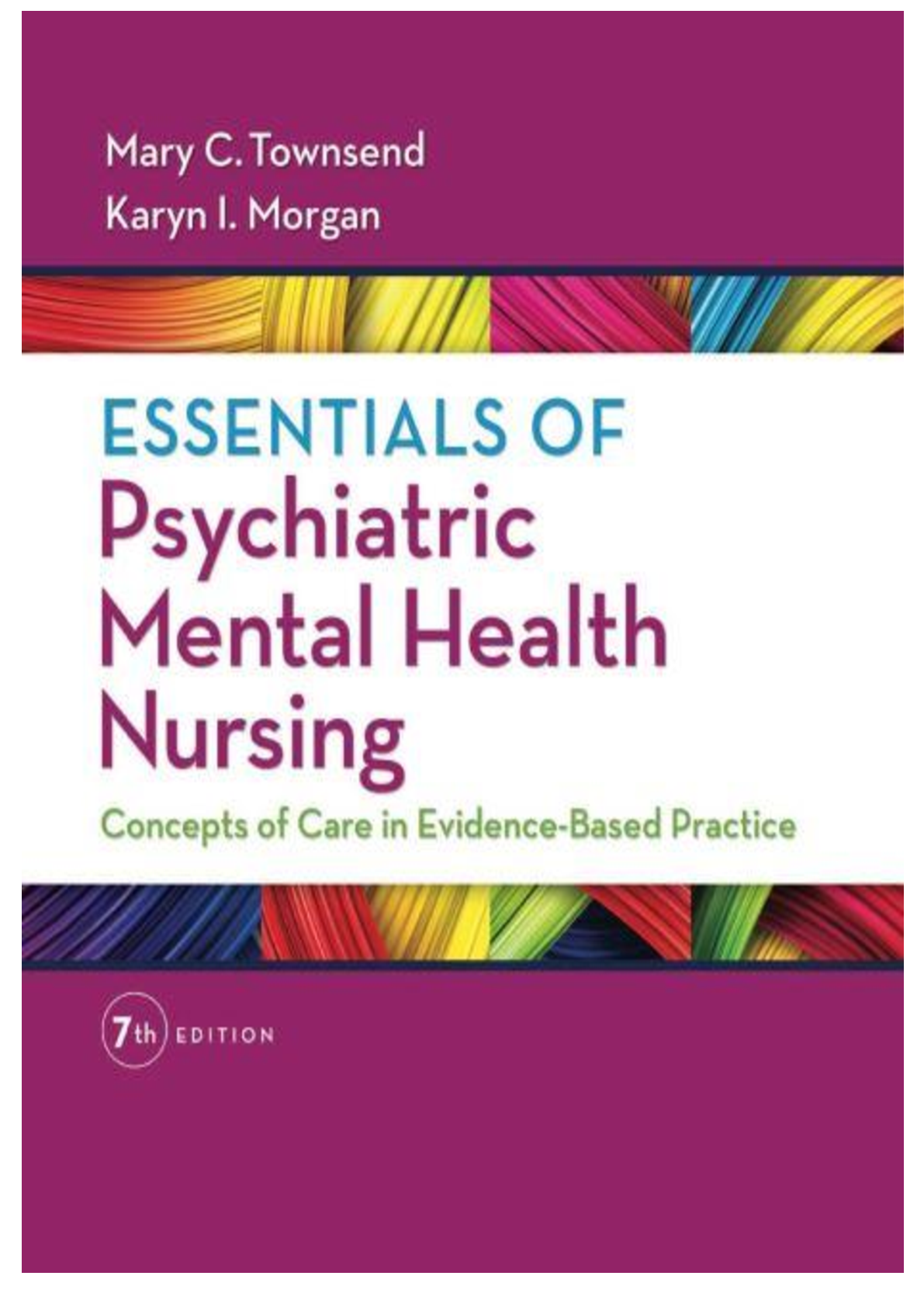
Reviews( 0 )
Document information
Connected school, study & course
About the document
Uploaded On
Sep 04, 2021
Number of pages
2
Written in
Additional information
This document has been written for:
Uploaded
Sep 04, 2021
Downloads
0
Views
35

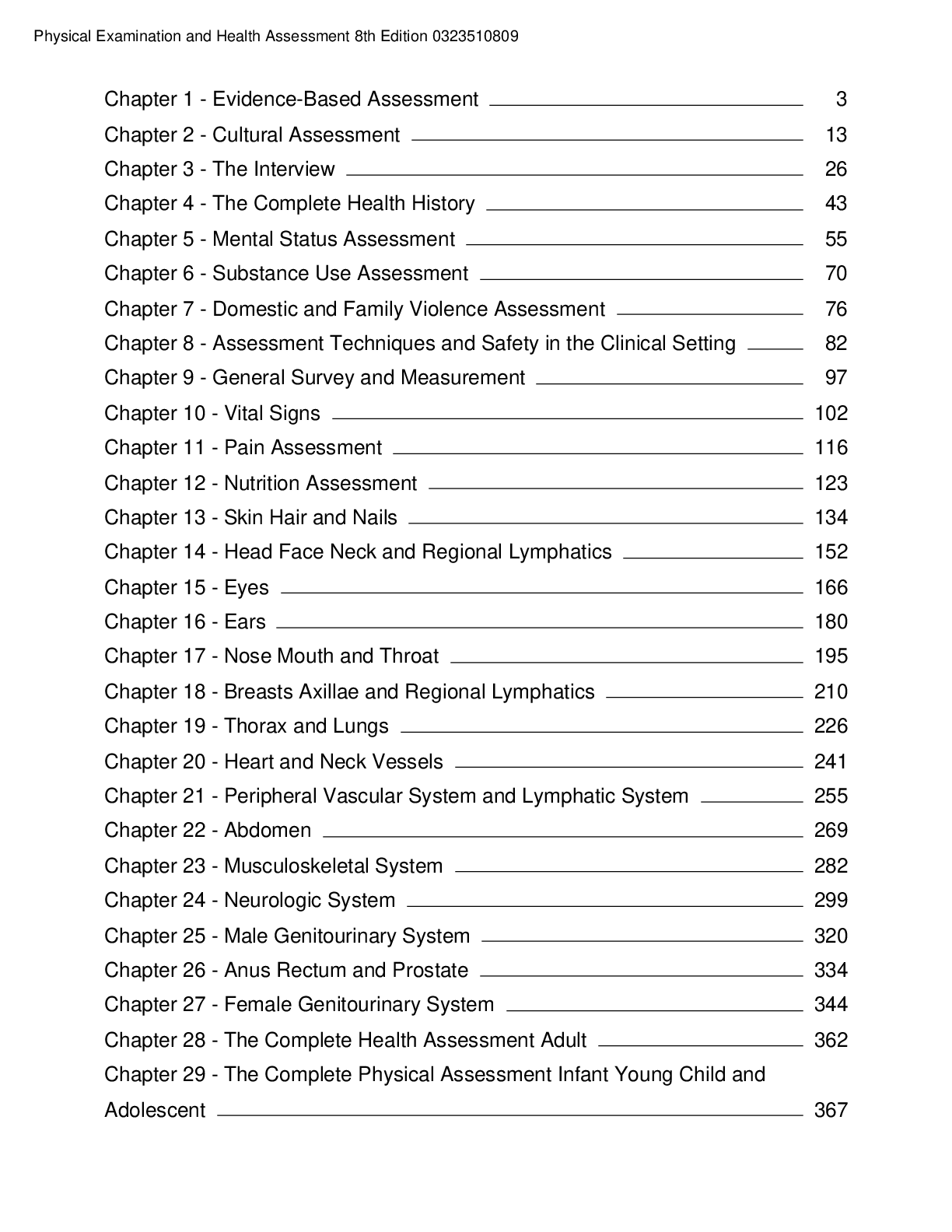
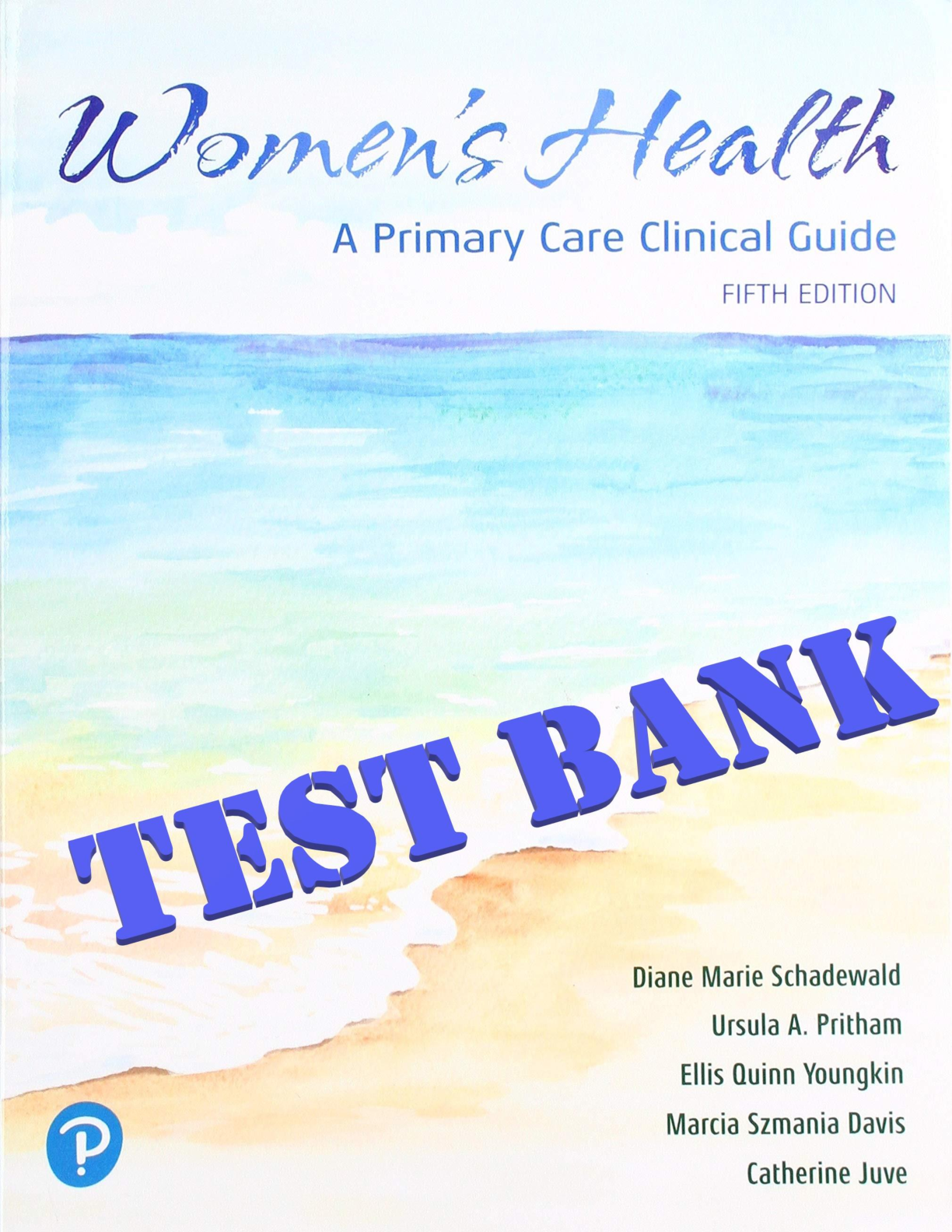
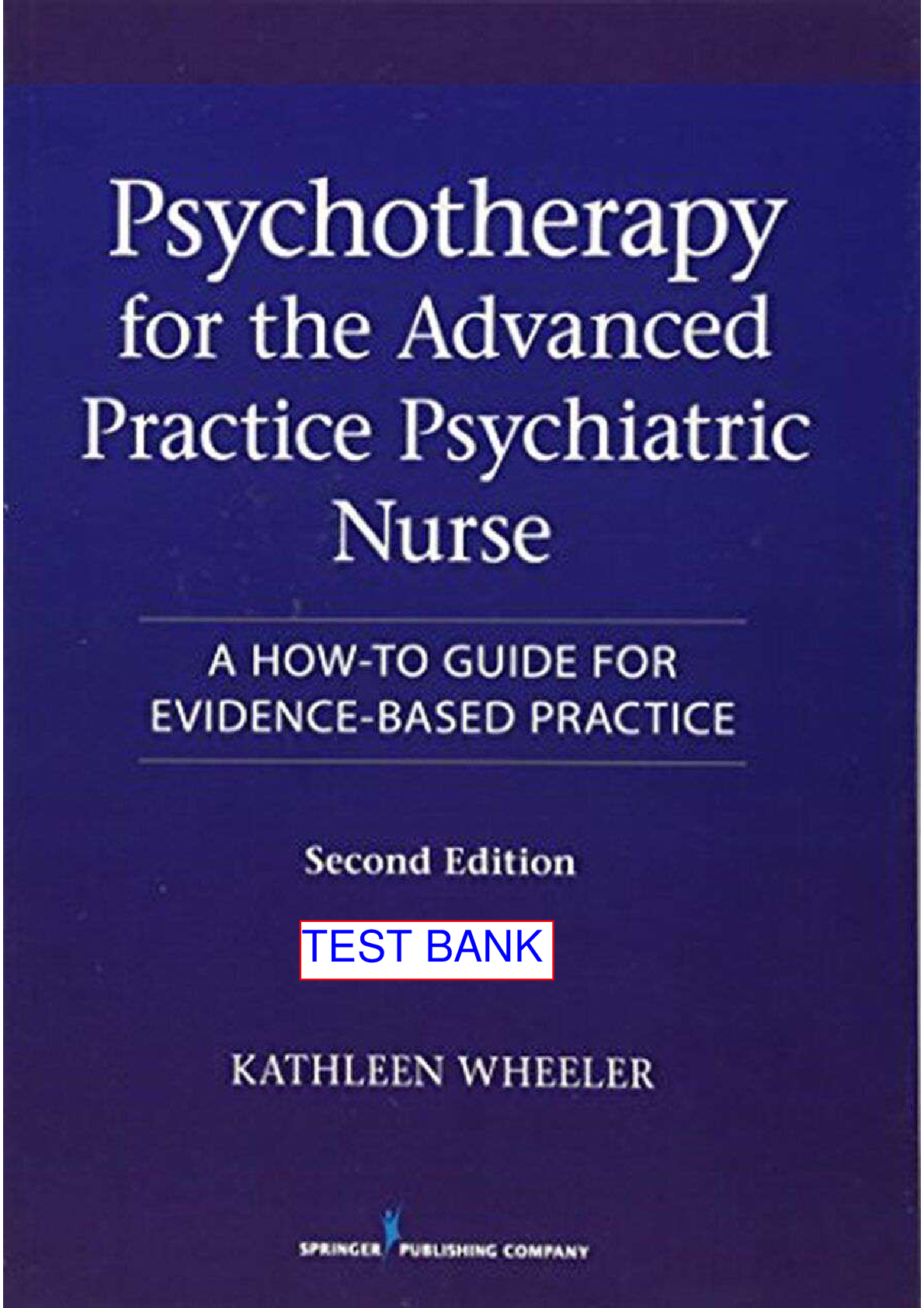
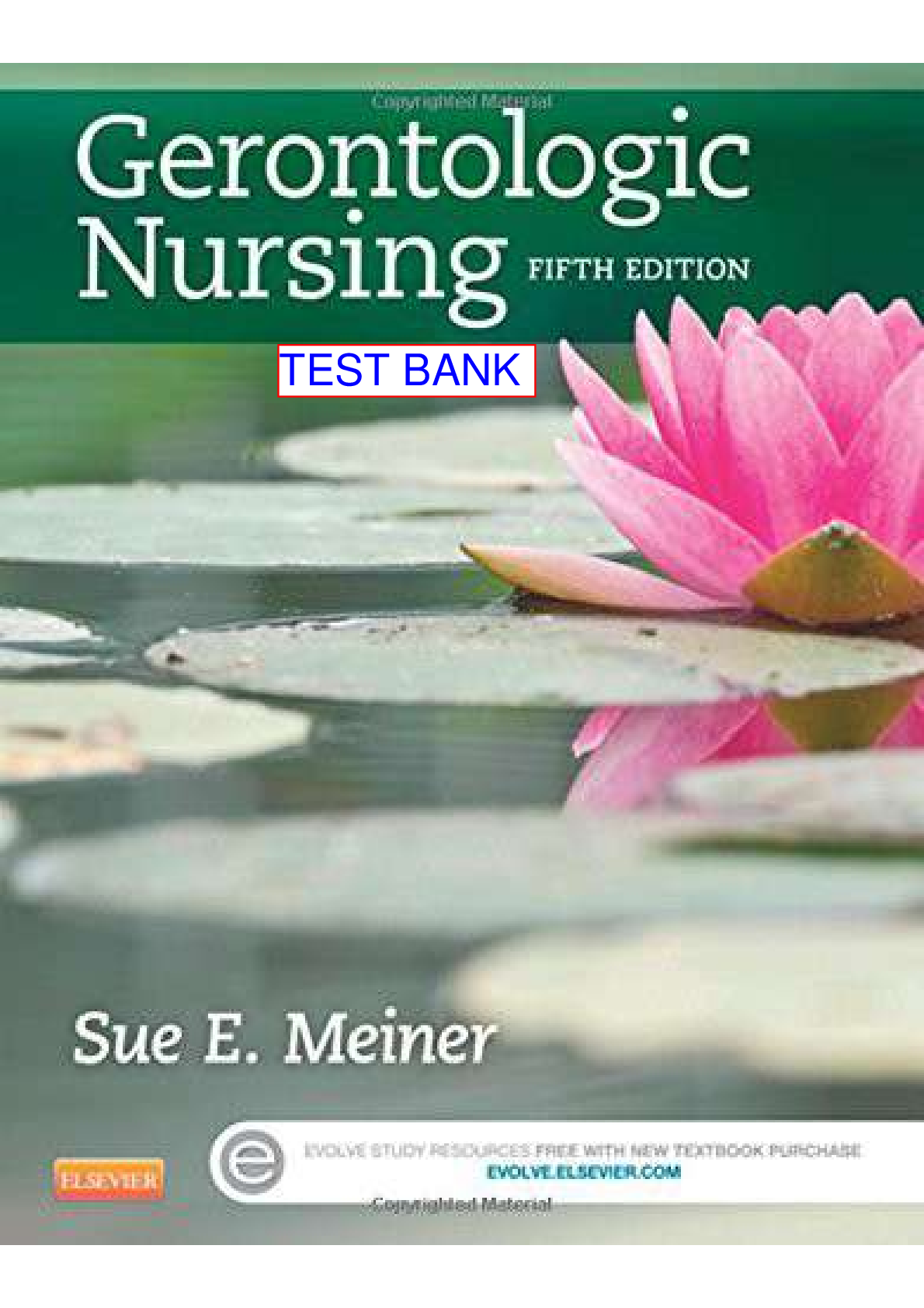

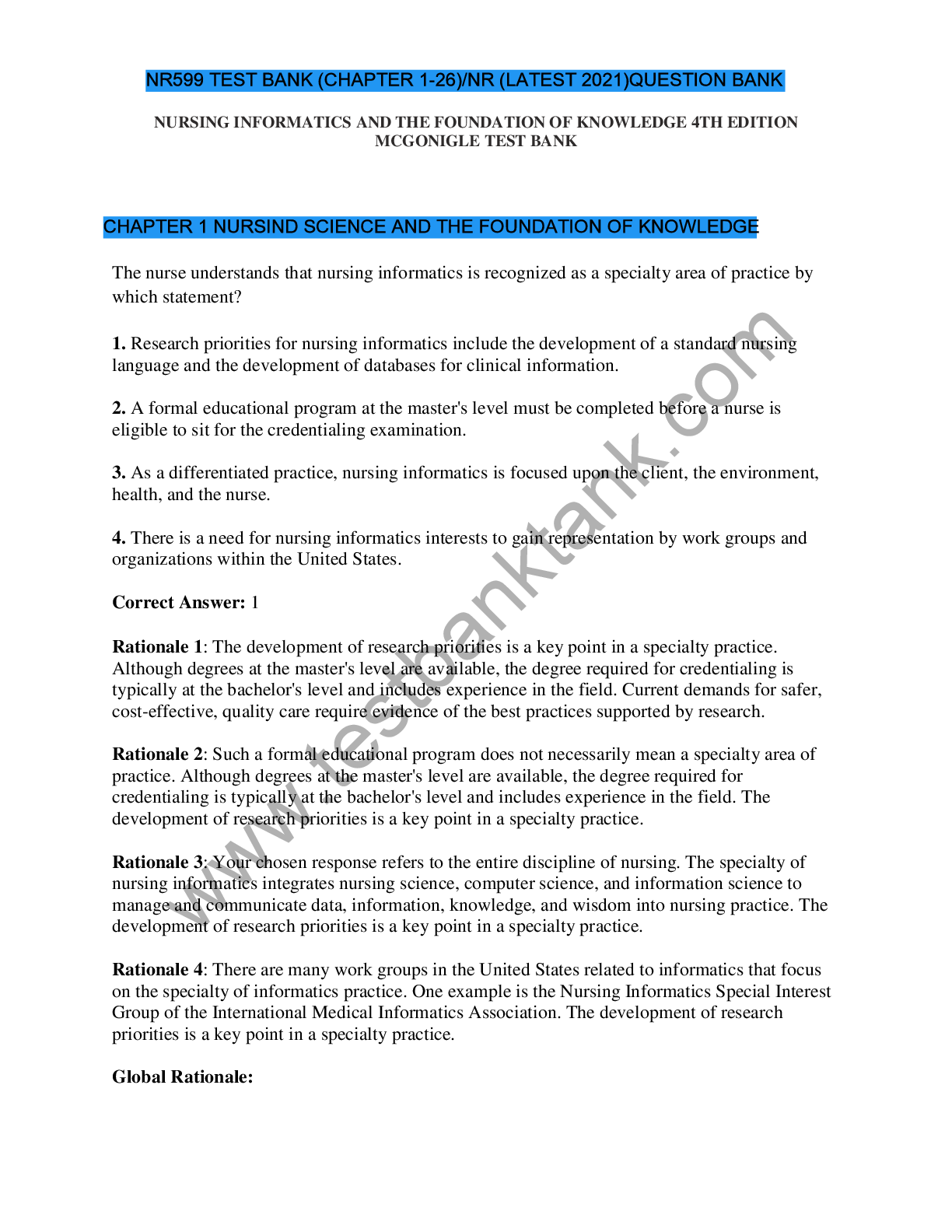
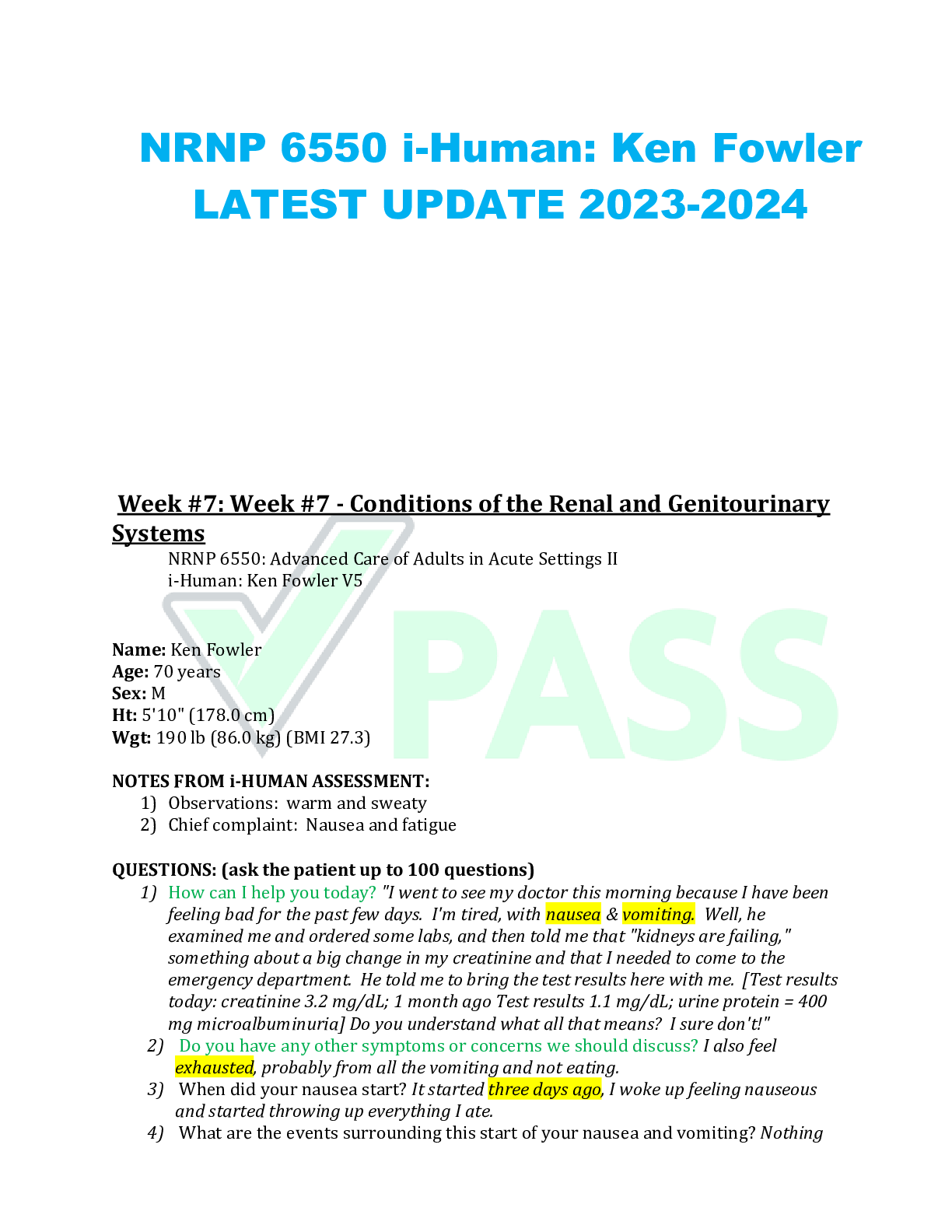
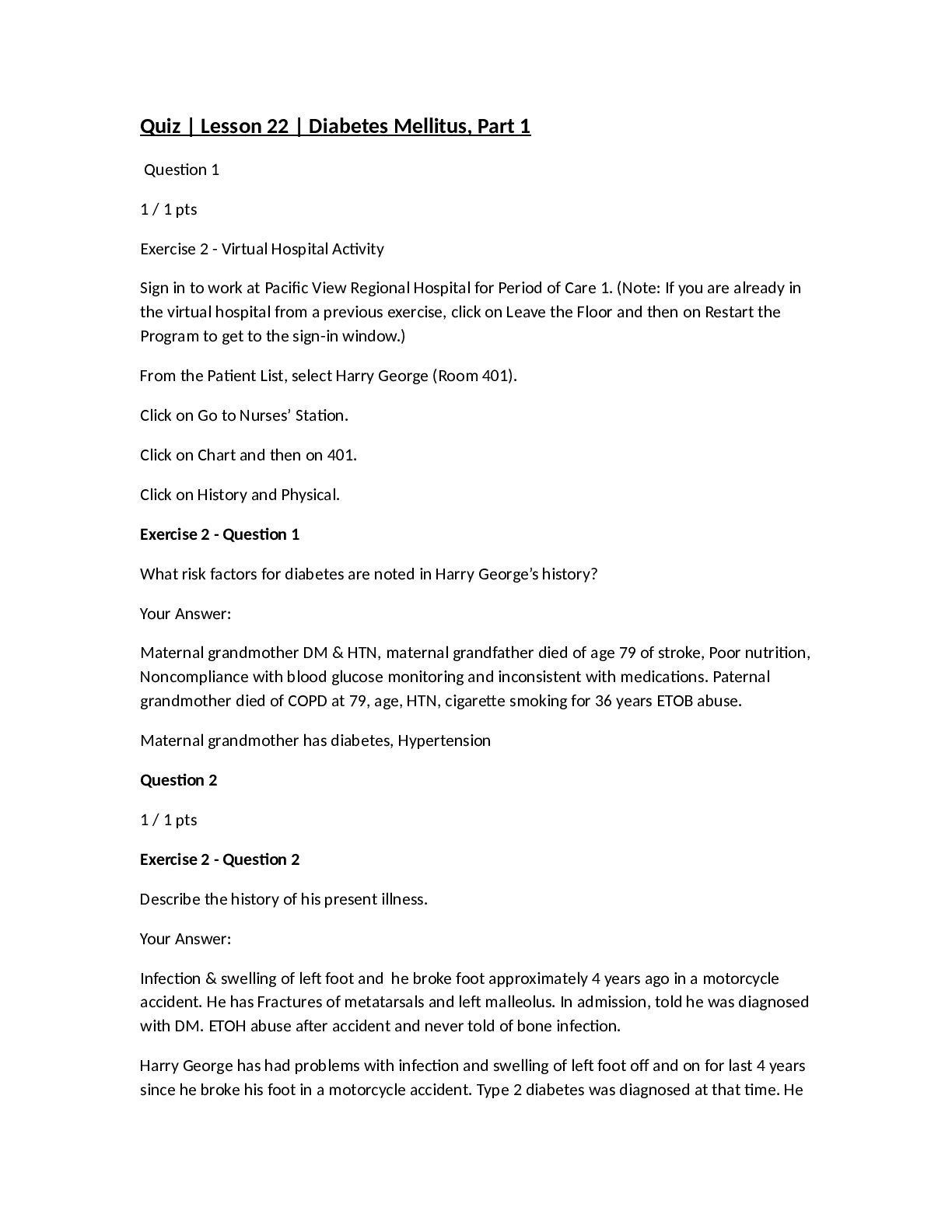
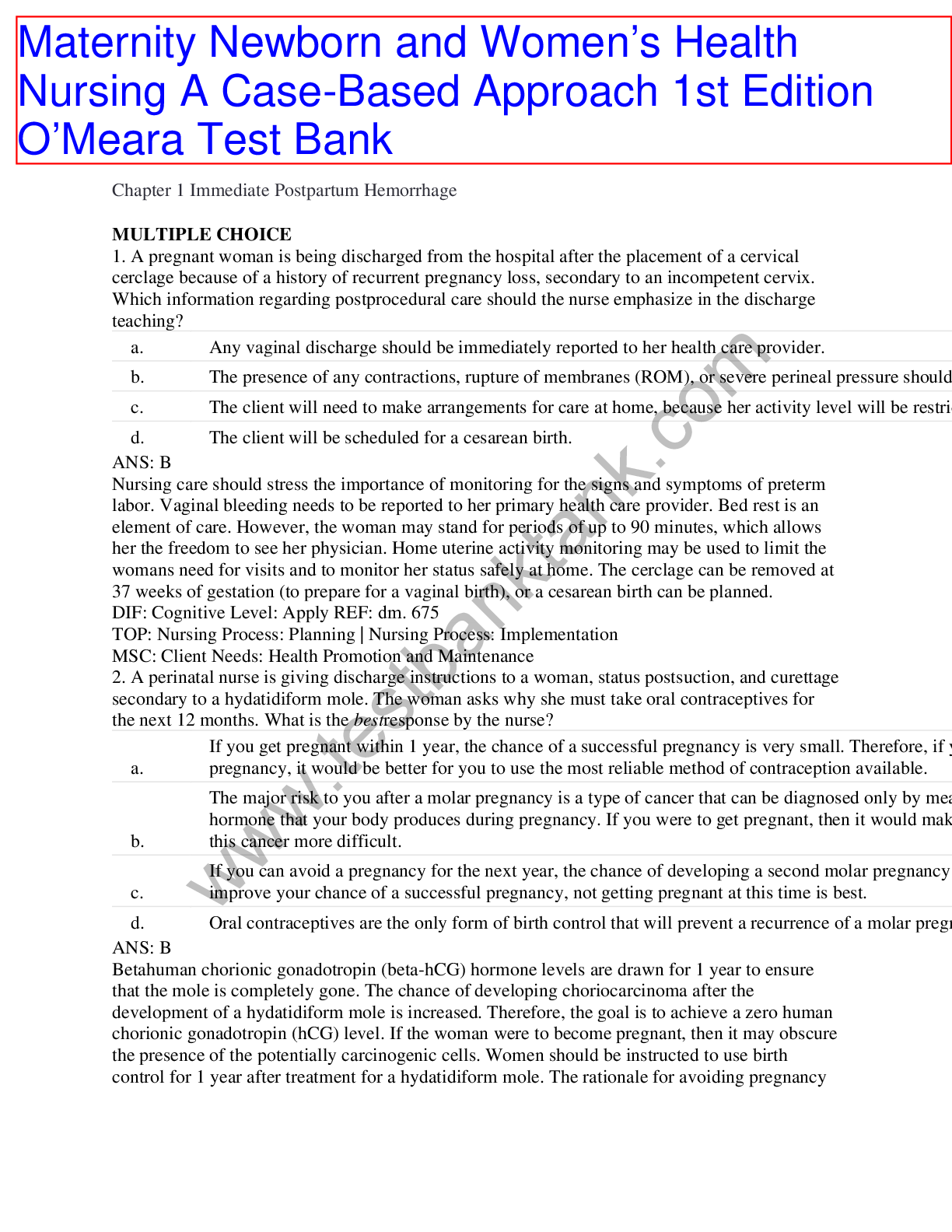

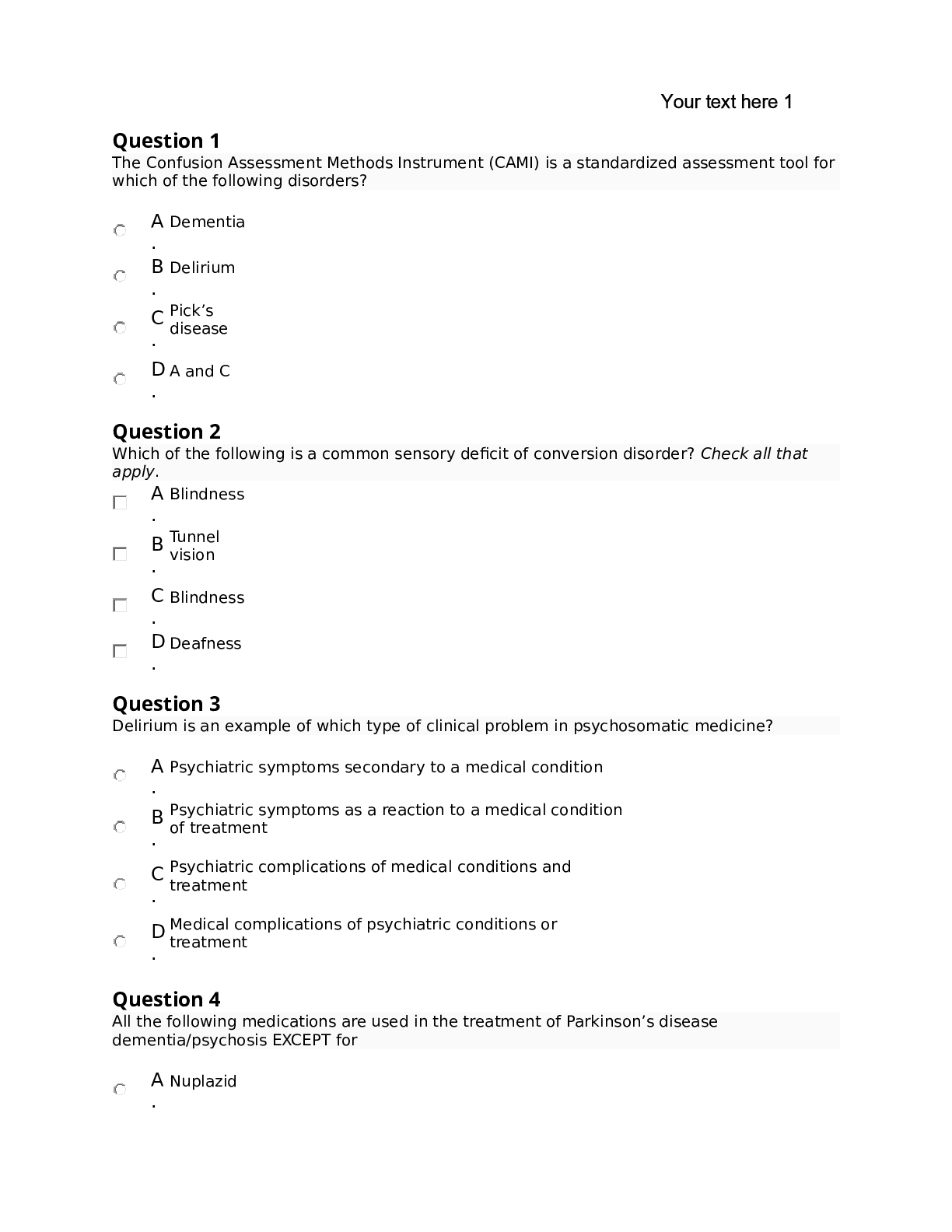
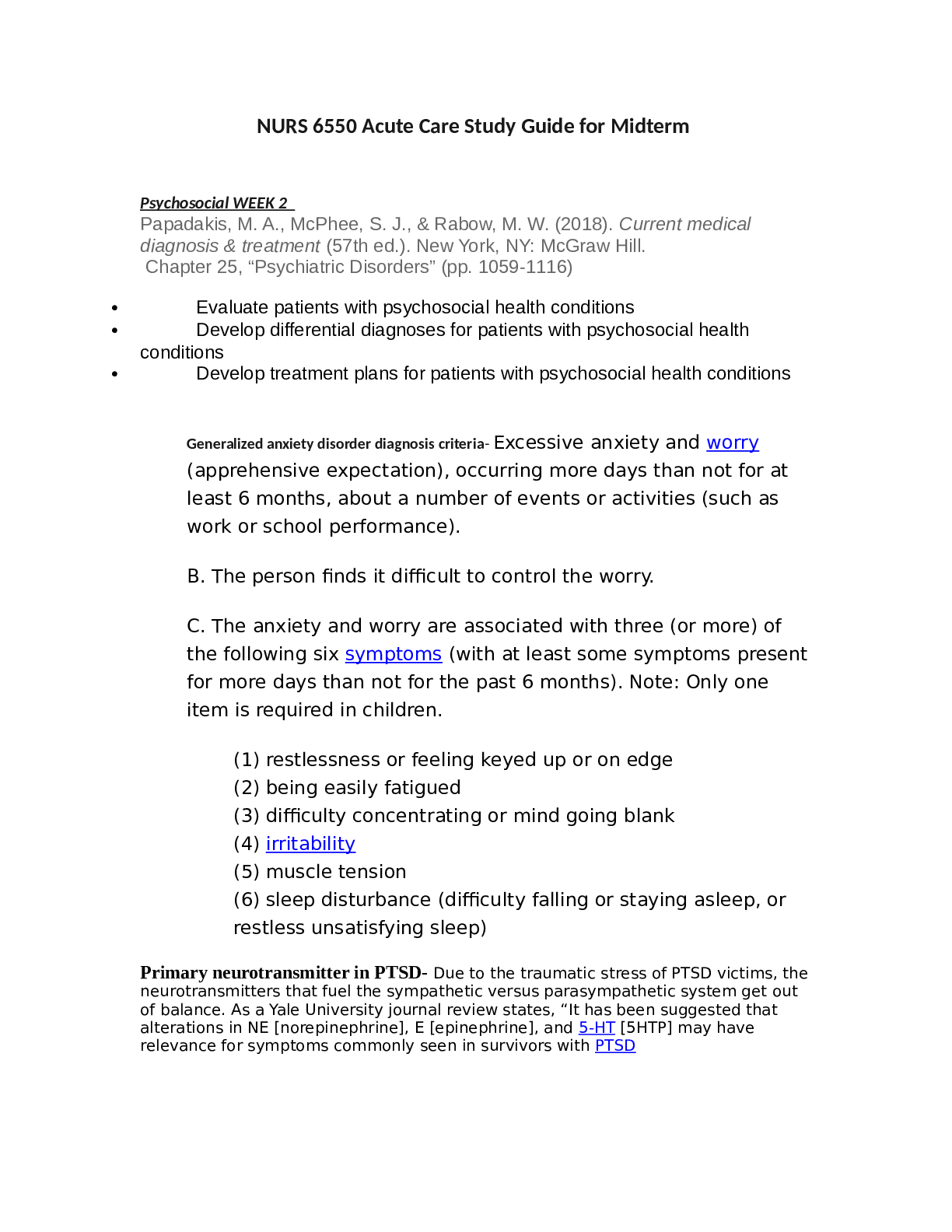
 (1).png)

